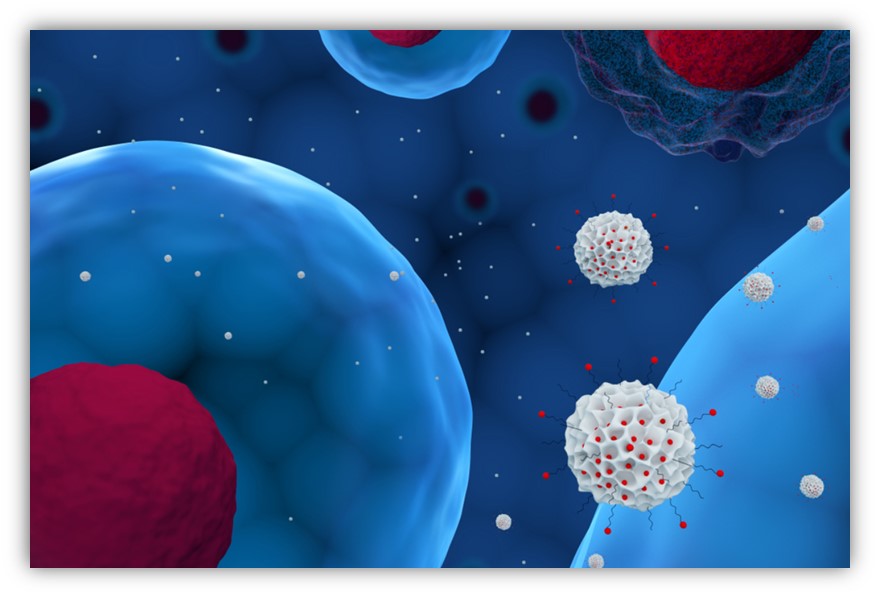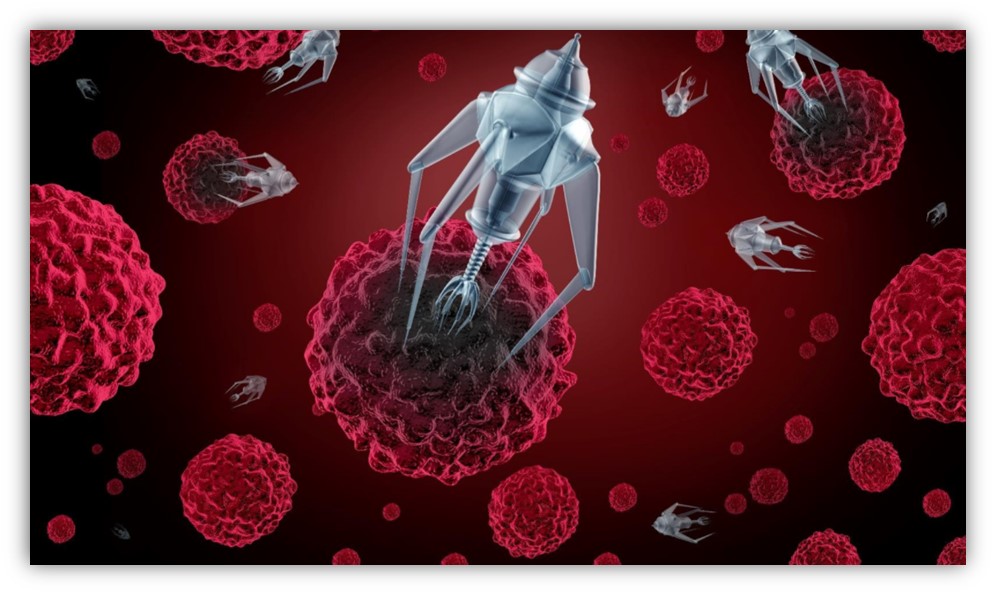Stroke is the second deadliest disease and a leading cause of mortality worldwide. Most of the strokes are caused by ischaemia and the rest is caused by haemorrhage. The aging population, lifestyle, and environmental factors increase the rate of stroke incidence, particularly in developing countries. Smoking, dyslipidemia, hypertension, diabetes and lack of physical activity are few common risk factors that give rise to 80% of stroke cases. Numerous preclinical studies have shown very promising results using neuroprotective agents but due to the side effects or the lack of efficacy, they failed at clinical trials. The development of anti-stroke drugs has been slow and is affected by multiple factors, including the therapeutic time window of drugs, the heterogeneity of patient cases and issues of drug safety and pharmacokinetics.
The emergence of nanotechnologies is having a significant impact on medicine. Immense effort in the field has offered a plethora of information about the use of nanomaterials. Engineered nanoparticles may also present specific advantages such as long circulation time, crossing biological barriers, and enhanced targeting properties. The features of nanotools vary broadly in terms of shape, size, composition, surface charge, hydrophilicity, conductivity, and rigidity.
What Causes a Stroke?
Acute ischaemic stroke results from a sudden loss of blood flow in cerebral arteries. Ischaemia leads to the development of a cascade of biochemical reactions which include the rapid depletion of the intracellular ATP pool, anaerobic glycolysis, lactate acidosis, membrane depolarization. Overproduction of free radicals gives rise to oxidative stress and finally apoptosis. Mitochondrial dysfunction, activation of the immune system and gene overexpression ultimately lead to cell death. On the other hand, haemorrhagic strokes are less common than ischaemic strokes. High blood pressure is the major cause of haemorrhagic stroke. Sudden bleeding of a blood vessel inside the skull causes this type of stroke.
Nanoparticles in Stroke Therapy
The available approaches to treat acute ischaemic stroke fall into 2 categories: early recanalization (thrombolysis) and neuroprotection. Nanoparticle drug delivery system has proven its potential in i) enhancing thrombolysis in ischaemic stroke, ii) reducing bleeding in hemorrhagic stroke, iii) reducing neuronal death, and iv) diagnosis and treatment of stroke.
i. Thrombolysis therapy with intravenous administration of t-PA (tissue-type plasminogen activator) is the gold standard treatment for ischaemic stroke. Plasminogen activator converts the endogenous plasminogen into plasmin, which in turns lyses the fibrin mesh of the thrombi, thereby promoting recanalization but the efficacy rate of t-PA is very low. Smart delivery nanodevices have been developed by using the thrombosis itself as the trigger for the release of the plasminogen activator. Perfluorocarbon nanoparticles, previously considered as artificial blood substitutes, have been developed into a platform technology for molecular imaging and targeted drug delivery, termed as “theranostic” technology. This fibrin targeted perfluorocarbon nanoparticles circulate to the intra-arterial thrombus and begin to recanalize the obstruction with the generation of plasmin.
ii. Intravenously administered nanoparticles consist of polymeric nanoparticles (PNPs) that target platelets or fibrin components to stabilize their structure and reduce intracranial bleeding time.
iii. Neuroprotection is an increasingly recognized treatment strategy in ischaemic stroke that promises to reduce stroke mortality rates and improve the quality of life. Unfortunately, all protective therapeutic approaches developed so far failed when they are applied to clinical trials due to the side effects of the drugs, decreased blood-brain barrier permeability or narrow therapeutic window. In recent years, PNPs are widely used for the delivery of oligonucleotides, proteins, and small molecules for the treatment of ischaemic stroke. Liposomes are the most used drug delivery system and already tested in non-stroke clinical trials because of their good biocompatibility, biodegradability, blood-brain barrier permeability, and low toxicity.
iv. Since no neuroprotective agents have been shown any measurable improvement in health in cerebral stroke cases, nanomedicine has drawn much more attention as a safe and effective strategy for transporting neurotherapeutic agents to the brain. Due to the type of disease, treatment needs to be target-specific. Administered drugs need to preserve their molecular structure to have excellent therapeutic abilities. Studies have shown that the success rate of drugs crossing the blood-brain barrier is around 4-7%. So, developing a drug for stroke disease must have high sustainability rates in order to go against the host's metabolism and natural defenses. Stroke induced brain inflammation causes excessive accumulation of fluid, which results in an elevation of intracranial pressure and the clinical symptoms of a stroke. Nanoparticles play a role in the metabolism of nerve cells and suppressing inflammation. The nanoparticles are uniquely designed because of their neuroprotective effect, target-specificity and safety.

Benefits of Nanoparticles over Conventional Drugs
Recent research has discovered the promising application of nanoparticles in stroke therapy. The thickness and the size of the nanoparticles' capsule are significant factors responsible for therapeutic effects.
Nanoparticles are the preferred choice for drug delivery due to the following reasons:
i. They have a diameter of less than 100 nm.
ii. Non-toxic and biocompatible.
iii. Biodegradable nature.
iv. Stable in blood.
v. Capable of targeting the blood-brain barrier.
vi. Non-inflammatory.
vii. A prolonged circulation time.
Different types of nanoparticles used for diagnosis are perfluorocarbon, iron oxide, gold, polymeric nanoparticles, quantum dots, nanospheres etc. Drug delivery to the brain via potentially therapeutic neuroprotectants and diagnostic compounds is restricted by the blood-brain barrier. Time is a very important parameter during a stroke. The activation of cells occurs in a matter of seconds. During the event of a stroke, the blood-brain barrier gets severely compromised and incapable of restoring normal function for a long time. The failure of neuroprotectants at clinical trials and the continuous research efforts to find out a safe and efficient alternative treatment give birth to nanoparticles, which can readily cross the blood-brain barrier without compromising its integrity and have immense applications in the treatment of ischaemic stroke.
Challenges
Despite the success of nanotechnology in stroke therapy, several obstacles still remain. Larger nanoparticles are not preferred since there might be a chance of uneven drug release. Drug delivery may fail if the nanoparticle prevents its complete release due to slow nanoparticle decomposition and entrapment of the drug within the particle's compartment. If a drug is greatly absorbed, the amount of drug released might not be advantageous in drug delivery. The inability of the nanoparticles to absorb the drug will result in the release of a significant amount which might not be beneficial. The drug release time is vital since an early release into the blood-stream results in decomposition and clearance by the host immune system. In addition to the difficulty in the development of new stroke therapies, the use of nanomaterials comes along with a significant risk of toxicity. Due to their bulky structures, injected nanoparticles are recognized as pathogens by the host than soluble molecules, which results in rapid clearance. Another major concern is the lack of protocols to assess the cytotoxicity of nanomaterials. A failure to assess the toxic profile of nanomaterials may lead to fatal outcomes. Nonetheless, the field of nanomedicine is trying to resolve the toxicity issue of nanomaterials and is proposing an increasing number of solutions. This significant progress towards biocompatibility will support efficient clinical translation.
Future Outlook
The ongoing research has confirmed that future perspectives of nanoparticles in stroke therapy are promising. Central nervous system injury biomarkers can be conjugated with nanoparticles in order to quickly diagnose using computed tomography (CT) scan or magnetic resonance imaging (MRI). These nanoparticles are, therefore, beneficial over conventional drugs. Unlike regular drugs, nanoparticles can be programmed to specifically target the injured brain areas.
Conclusion
The increasing threat of stroke morbidity and mortality, the disadvantages and risks displayed by other neuroprotective agents, and the urgent need for more efficient and safer alternative therapies for treating stroke have steered research towards nanotechnology. Thus, nanomedicine targeting stroke treatment must be carefully designed to achieve the safest and most efficacious therapeutic regimen to deliver different neuroprotectants to the brain by combating the blood-brain barrier. The coordinated effort of researchers will definitely lead to the enormous advancement of clinical translation of this research field and enable the development of more promising theranostic nanomedicine very soon.

